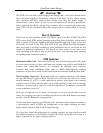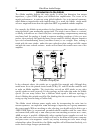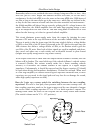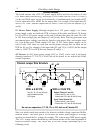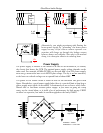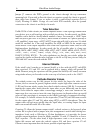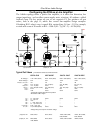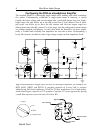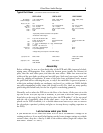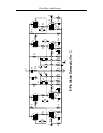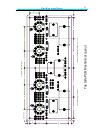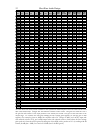
GlassWare Audio Design
2
The Aikido
amplifier delivers the sonic goods. It offers low distortion, low output
impedance, a great PSRR figure, and feedback-free amplification. The secret to it
s
superb performance— in spite not using global feedback—
lies in its internal symmetry,
whic
h balances imperfections with imperfections. As a result, the Aikido
circuit works
at least a magnitude better than the equivalent SRPP or grounded-cathode amplifier.
For example, the Aikido circuit produces far less distortion than comparable circuits
by
using the triode’s own nonlinearity against itself. The triode is not as linear as a
resistor,
so ideally, it should not see a linear load, but a corresponding
, complementary, balancing
non-linear load. An analogy is found in someone needing eyeglasses; i
f the eyes were
perfect, then perfectly flat (perfectly linear) lenses would be needed, whereas imperfect
eyes need counterbalancing lenses (non-linear lenses) to see straight. Now,
loading a
triode with the same triode— under the same cathode-to-plate volt
age and idle current
and with the same cathode resistor—
works well to flatten the transfer curve out of the
amplifier.
Aikido Amplifier
B+
Rk
Rk
in
out
R16
R15
Rk
Rk
C
6922 6922
69226922
Rg
Rgs
Rgs
Introduction to the Aikido
In the schematic above, the triodes are so specified for example only.
Although they
would never fit on the printed circuit board (PCBs), 211 and 845 triodes could be used
to make an Aikido amplifier. The circuit does not rely on 6922 triodes
or any other
specific triodes to work correctly. It’s the topology
, not the tubes that make the Aikido
special. (Far too m
any believe that a different triode equals a different topology; it
doesn't. Making this mistake would be like thinking that the essential aspect o
f being a
seeing-eye dog rested in being a Golden Lab.)
The Aikido circuit sidesteps power supply noise by incorporating the noise into its
normal operation. The improved PSRR advantage is important, for it greatly unburdens
the power-supply. With no twea
king or tube selecting, you should easily be able to get a
-30dB PSRR figure (a conventional grounded-
cathode amplifier with the same tubes
and current draw yields only a -
6dB PSRR); with some tweaking of resistor R15’s value,
-60dB or more is possible. Ad
ditionally, unless regulated power supplies are used for
the plate and heater, these critical voltages will vary at the whim of the power company
and your house’s and neighbors’ house’s use, usually throwing the once fixed voltage
relationships askew. Neve
rtheless, the Aikido amplifier will still function flawlessly, as it
tracks these voltage changes symmetrically.




